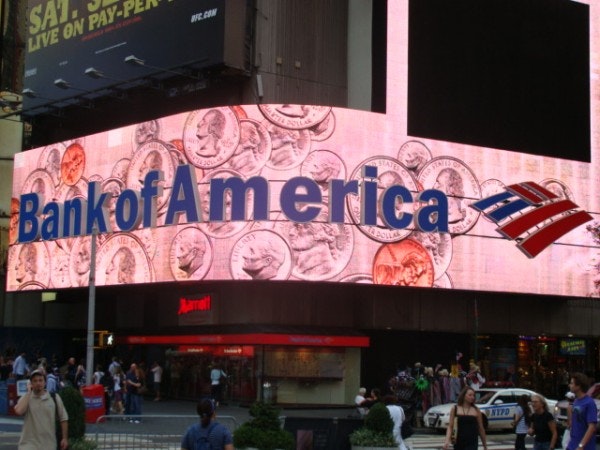When I began investing, bank stocks piqued my curiosity, but they definitely seemed too exotic and too arcane. So, for a long time, I stuck more with consumer-goods type companies, like Starbucks Corporation (NASDAQ:SBUX), Whole Foods Market, Inc. (NASDAQ:WFM), and Chipotle Mexican Grill, Inc. (NYSE:CMG).I’m still in those companies, and they’re performing as well as ever, but I’ve also made the leap into bank stocks, and my portfolio is all the better for it. Banks have actually become some of my best performers.
So as a salute to investable banks, and maybe with the hope of turning others on to the good investment direction I’ve found, here are 15 rapid-fire, easy-to-digest reasons to get some bank stocks into your portfolio right now (in no particular order).

2. “Too big to fail” still lives: Why is this a good reason to buy into a bank? The implicit guarantee of TBTF means that the federal government simply cannot let certain banks fail, so your investment is much safer than it would otherwise be.
For instance, no administration will ever be able to let JPMorgan Chase & Co. (NYSE:JPM) — the nation’s biggest bank — fail, no matter what crazy thing it might do to get itself into trouble.
3. Balance sheets are cleaner than ever: The housing boom and subsequent crash destroyed the balance sheets of many big banks, like Citi’s and B of A’s, but four-plus years on the banks have made great progress in dealing with their toxic mortgage debt.
4. The housing market is starting to recover: Banks can still make a lot of money the old-fashioned way: lending money and charging interest, and America remains at heart a home-ownership society, even after the most recent boom and bust.
5. The financials sector has serious momentum: In 2012, the financials sector was the best performing sector of the S&P 500. Investors are starting to realize what they’ve been missing, and are therefore driving up share prices.
6. Rising profits: In the fourth quarter, Goldman Sachs Group, Inc. (NYSE:GS) reported net-income growth of 185.5%. Wells Fargo & Co (NYSE:WFC) reported net-income growth of 23.9%. Those are big numbers.
7. Great stress-test results: For 2013, 17 of the 18 financial institutions the Federal Reserve ran through its simulated, severe economic downturn passed, demonstrating once again how far banks have come since the crash.
8. Dodd-Frank is in effect: The 2010 Wall Street Reform and Consumer Protection Act is some of the most far-reaching and comprehensive bank-reform legislation passed since the Great Depression. Well-regulated banks make for safe, stable banks, and therefore better investments.
9. Banks are still viewed with suspicion post-crash: This despite the fact the banks are stronger than ever, which is all the more reason to get in now. And banks are only getting stronger and will increasingly be seen as a profitable way to invest.
10. Many banks already pay solid dividends: Wells Fargo pays 2.7%, JPMorgan and PNC Financial Services (NYSE:PNC) each pay 2.4%, and U.S. Bancorp (NYSE:USB) pays 2.3%. Not too bad for one of the oldest business models in existence.
11. Rising dividends and share buybacks: Many of the banks that just went through the Fed’s stress tests also had their proposed capital plans approved, leading the way for bigger dividends, share buybacks, or both.
12. Reasonable price-to-earnings ratios: Citi has a P/E of 18, but even that’s on the high side. JPMorgan sports a P/E of just 9.4, Goldman Sachs 10.53, and Wells Fargo just 11.1.
13. A solid crop of CEOs: Like them or not, JPMorgan’s Jamie Dimon and Goldman Sachs’ Lloyd Blankfein are two of the sharpest knives in the banking block. Both are excellent risk managers, even given — for Dimon — the London Whale.
Citi CEO Michael Corbat also seems to be just what his superbank needs: a buttoned-down, conservative banker who will do what’s in the best interest of the bank, even if shareholders don’t get things like dividend increases or share buybacks.
14. Rising return on equity: A classic metric for measuring bank performance from an investor perspective, ROEs are generally on the rise, as banks are slowly but surely figuring out how to make money in a post-crash, post Dodd-Frank world.
15. Fast-growing deposits: Again, this is making money the old-fashioned way. But as banks look for ways to make money in safer, more stable ways — and ways that conform to new, stricter regulations — deposits still matter.
Foolish bottom line
Banks are back: bigger, stronger, more stable, and better regulated than ever. This makes them an excellent place to invest, and it could be just the diversification your portfolio needs. Banks are just plain fun to research and look into, as well. I’m glad I finally looked into them, and I think you will be, too.
The article 15 Reasons to Invest in Bank Stocks Right Now originally appeared on Fool.com.
Fool contributor John Grgurich owns shares of Goldman Sachs, JPMorgan Chase, Chipotle Mexican Grill, Starbucks, and Whole Foods Market. Follow John’s dispatches from the bleeding heart of capitalism on
Twitter @TMFGrgurich. The Motley Fool recommends Chipotle Mexican Grill, Goldman Sachs, Starbucks, Wells Fargo, and Whole Foods Market. The Motley Fool owns shares of Bank of America, Chipotle Mexican Grill, Citigroup, JPMorgan Chase, PNC Financial Services, Starbucks, Wells Fargo, and Whole Foods Market.
Copyright © 1995 – 2013 The Motley Fool, LLC. All rights reserved. The Motley Fool has a disclosure policy.